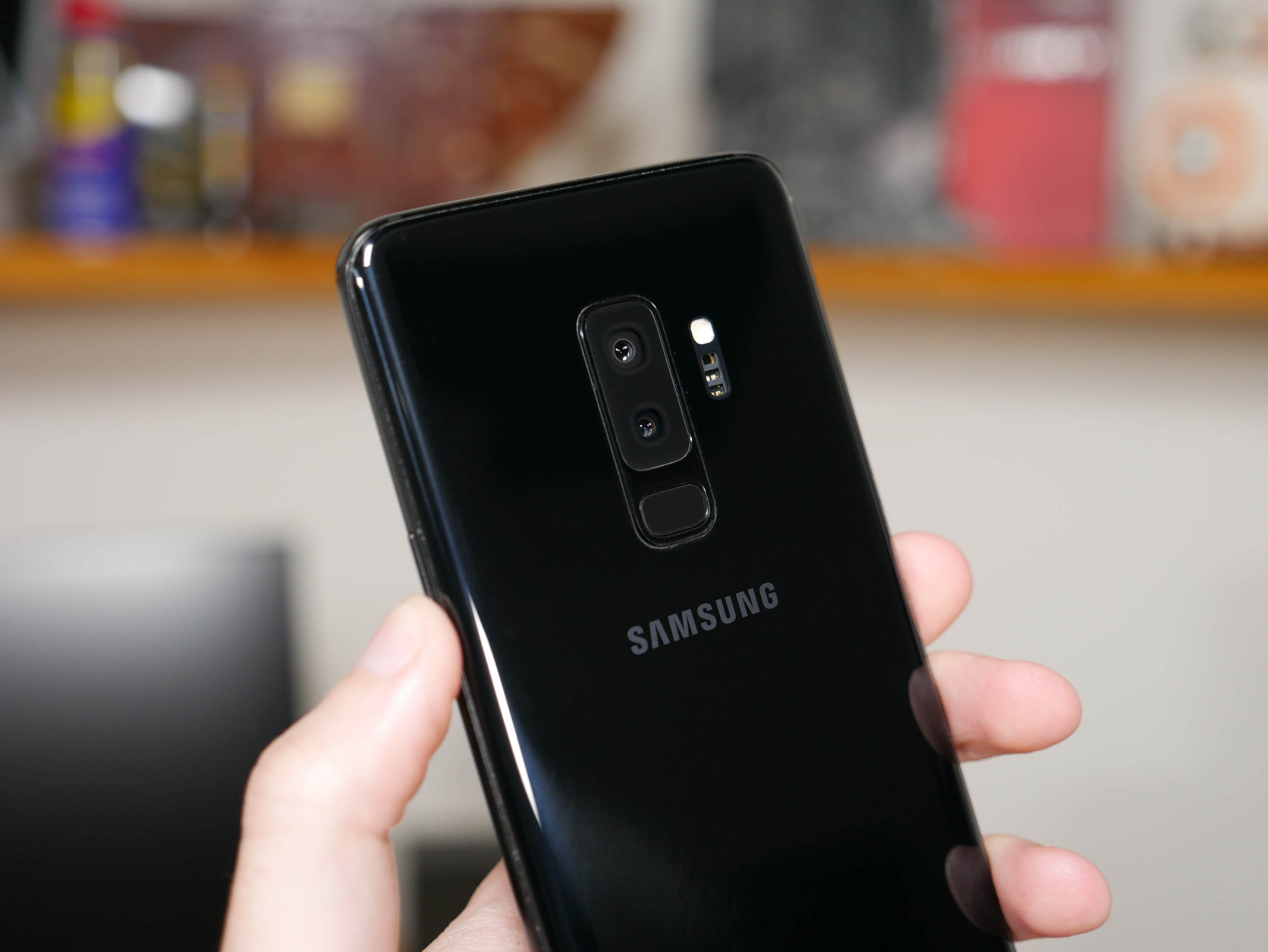System Performance
As with previous Samsung Galaxy S devices, there are two variants of the Galaxy S9 and Galaxy S9+. One version sold in the United States, China and Japan is powered by Qualcomm's latest system-on-a-chip, the Snapdragon 845. The other variant sold in the rest of the world uses Samsung's own Exynos 9810, and that's the variant we reviewed.
The Exynos 9810 is the successor to the Exynos 8895 that first appeared in the Galaxy S8. We're still looking at a dual quad-core implementation, just with newer core architectures, improved clock speeds and more cache. The 'big' performance cores are using the Exynos M3 design, which is a much wider core design with significant IPC improvements over the Exynos M2 in the 8895. There are four of these cores clocked up to 2.7 GHz in single-core workloads, while sitting at 2.3 GHz in dual-core loads and 1.8 GHz in all-core workloads. This tiered clock-speed setup is very reminiscent of x86 chips from Intel and AMD, but is relatively rare in ARM SoCs. Complementing the big cores are four smaller efficiency cores that use the Cortex-A55 design, clocked up to 1.8 GHz. This is a small upgrade on the Cortex-A53s used in the 8895, along with a 100 MHz clock speed increase.
On the GPU side, Samsung has moved from a Mali-G71 MP20 at 546 MHz to a Mali-G72 MP18 at 572 MHz. In other words, we're seeing two fewer cores than in the 8895, but at a higher clock and using a newer design. The memory controller remains the same quad 16-bit LPDDR4X controller providing 28.7 GB/s of bandwidth.
As the Exynos 9810 is an SoC, there's an integrated Shannon LTE modem with improved capabilities relative to the 8895. Samsung has upgraded the design to support Category 18 LTE with 6x carrier aggregation, with download speeds as high as 1200 Mbps. The SoC is manufactured on Samsung's 10nm LPP process.
Whenever you see a new SoC used in a smartphone that iterates on its powerful predecessor, you typically expect better performance. However with the Exynos 9810 in the Samsung Galaxy S9+, that's not really the case, as we'll explore in both synthetic and real-world benchmarks. Yes, that's right, we're now using real-world performance benchmarks to measure smartphone performance.


Let's kick things off looking at browser performance in Octane and Kraken. Here we see a decent performance improvement of around 25 percent for the Galaxy S9+ in Octane relative to the Galaxy S8+, however it falls behind in Kraken to the tune of 17 percent. Not the best start for an SoC that supposedly has a more than 50% IPC gain.

In Basemark Web 3.0 the Galaxy S9+ is a decent 19 percent faster than the Galaxy S8+ with the largest gains seen in the generic suite. However performance is no better than a device with the last-gen Snapdragon 835 inside, which is a concern for a newer SoC that is being shipped alongside the Snapdragon 845 variant.

In PCMark we see relatively modest performance gains. Using the original Work test, the Exynos 9810 in the Galaxy S9+ is just 4% faster than the Exynos 8895 looking at the overall score, which breaks down into 16% faster in the web test, 22% faster in the video test, 18% slower in the writing test, and 3% faster in the photo test. In this benchmark, the Galaxy S9+ gets badly beaten by the Pixel 2 XL with its last-generation Snapdragon 835 SoC.

Looking at the newer Work 2.0 test, it's still not great news for the Galaxy S9+ with just a 6 percent performance gain. Again, it gets handily beaten by the Snapdragon 835 by around 25 percent.


In Basemark OS II 2.0, the Galaxy S8+ actually outperforms the Galaxy S9+ by 14% in the overall score, though the Exynos 9810 does eek out a win in the CPU-heavy system score to the tune of 20 percent. Again, not a great result for the newer Galaxy S9+ and its Exynos 9810 SoC, especially considering it's beaten by the Snapdragon 835 once more.
As these are just synthetic results, I did want to examine whether we're seeing any performance gains with the Exynos 9810+ in real world applications. So I went back and re-tested a collection of smartphones in a range of widely used Play Store apps. Unfortunately I don't have data for the Exynos 8895 in these apps, but I can compare the Exynos 9810 to the Snapdragon 835.

Pixlr is a popular photo editing app, and here I'm benchmarking the time it takes to save a large image with a filter applied. The effect is applied at full resolution during the save process, so a faster SoC can apply the effect more quickly and complete the save faster. In this test, the Exynos 9810 is a decent 20 percent faster than the Snapdragon 835 in the Pixel 2 XL.

Our Excel benchmark is a very basic column sort of a large file with 60,000+ rows. The Galaxy S9+ is 13 percent faster at completing this sort than the Pixel 2 XL, though the HTC U11 using the same SoC closes this gap to just 7 percent. Not a resounding win for the Exynos 9810 but better than nothing.

When fully loading a PDF in Acrobat Reader, the Galaxy S9+ with the Exynos 9810 is again around 20 percent faster than the Pixel 2 XL with its Snapdragon 835. A decent performance improvement but it doesn't establish the Exynos chip as the outright fastest on the market, with the last-gen Kirin 960 coming in very close.

The final benchmark we'll be unveiling today is RAR decompression. Here the Exynos 9810 was actually 18 percent slower than the Snapdragon 835 in the Pixel 2 XL. A disappointing result for the Exynos 9810.
